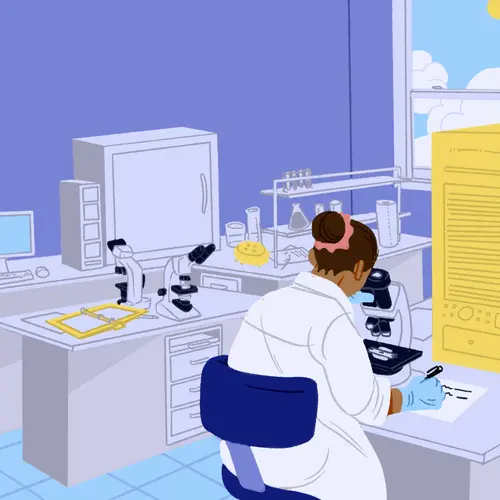When you think about the jobs your bones do, fighting disease probably isn’t the first thing that comes to mind. But in the center of your body’s long, flat bones (like your breastbone), you have soft, spongy tissue called bone marrow.
Your bone marrow makes stem cells. Some of them become white blood cells, which are an important part of your body’s immune system. Plasma cells are a type of white blood cell. Normally, they make antibodies -- proteins to help kill germs that enter your body.
But with the group of diseases known as plasma cell neoplasms, your body makes too many plasma cells. They make an antibody called “M protein,” which you don’t even need and can cause your blood to thicken. In some plasma cell neoplasms, the cells are cancer and form tumors, usually in your bones. The symptoms you get and the treatment you need depend on which type you have.
Types
Plasma cell neoplasms range from not much of a problem to life-threatening.
- Monoclonal gammopathy of undetermined significance (MGUS) happens when you have some plasma cells that make M protein, but it’s not cancer and you don’t have any tumors. Usually, the M protein levels are low enough that MGUS doesn’t cause problems. It can lead to serious issues, such as multiple myeloma, but this only happens in about 1% of cases each year.
- Lymphoplasmacytic lymphoma is a cancer that can spread to your bone marrow, spleen, and lymph nodes. It can also cause your blood to thicken due to high M protein levels. You may also hear this condition called Waldenstrom's macroglobulinemia, or WM.
- Plasmacytoma is another type of cancer where plasma cells form a single tumor, usually in a bone, but sometimes in soft tissue outside the bone. It may develop into multiple myeloma.
- Multiple myeloma. The tumors crowd out normal cells, which leads to fewer healthy blood cells and weaker bones.
Causes
Doctors aren’t sure, but they believe plasma cell neoplasms likely are related to changes in the genes of some plasma cells. They’ve learned a lot about which genes are involved, but not what triggers the changes.
You may be more likely to get it based on your:
- Age (most common in adults 65 and older; very rare in people under 35)
- Sex (men are little more likely to get it)
- Race (African-Americans more likely to get it)
Symptoms
These depend on which type of plasma cell neoplasm you have.
MGUS doesn’t usually cause any symptoms.
Lymphoplasmacytic lymphoma symptoms can include:
- Blurred vision
- Dizziness
- Headaches
- Tiredness
- Weight loss
- Shortness of breath
- Hearing problems
- Numbness or tingling
Plasmacytoma may cause pain (in bones or soft tissue) and broken bones.
Multiple myeloma may not cause any problems early on. When it does, common signs and symptoms include:
- Weak or broken bones
- Feeling very tired
- Getting sick often
- Pain in your bones
- Problems breathing
Other Problems
The tumors you get with plasma cell neoplasms can also damage your bones. This may cause hypercalcemia, where your blood has too much calcium. Like amyloidosis, it can affect how your organs work and lead to serious problems, but you can get treatment.
Other problems include:
- Kidney injury
- Weak bones
- Complications from high calcium, such as kidney stones, abdominal pain and bone pain
- Bleeding from low platelets
- Clots (with certain other conditions)
- Shortness of breath
- Infections
Diagnosis
Your doctor will start by asking you questions about your health and symptoms, then give you a physical exam.
After that, you may get:
- Blood and urine tests to look for signs of tumors, such as unusual protein levels (Your doctor may also check the overall health of your blood and levels of different types of blood cells.)
- A biopsy, where your doctor takes a sample of bone, marrow, and blood for testing
- Imaging, such as X-rays, MRI, CT, or PET scans to check for bone damage
Treatment
Your treatment will depend on the condition type, the kinds of problems it’s causing, and your overall health. Here are the common treatments:
- Biologic therapy, also called immunotherapy, uses drugs to boost your immune system to fight cancer.
- Chemotherapy uses medicine to kill cancer cells.
- Radiation therapy destroys cancer cells with beams of high energy from X-rays and other sources.
- Surgery removes the tumor, often followed by radiation to help keep the cancer from coming back.
- Targeted therapy uses drugs that go after cancer cells but leave normal cells alone.
- Bone marrow transplant
To help keep your bones strong and reduce bone pain, your doctor may give you drugs called bisphosphonates. If the disease causes your blood to thicken, you may get plasmapheresis. This helps relieve your symptoms by removing extra proteins from your blood.

